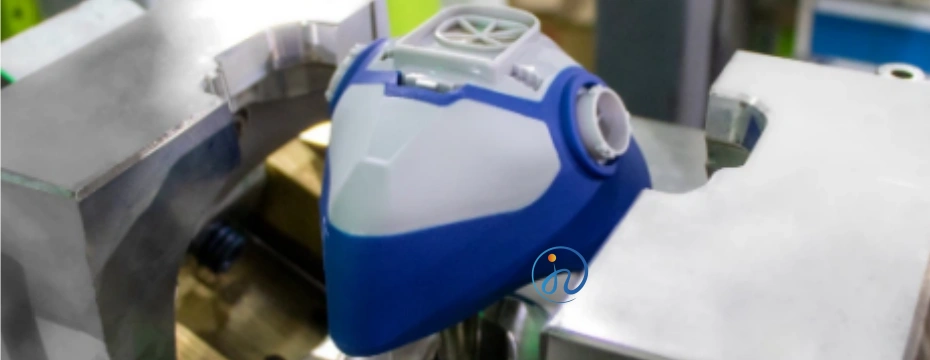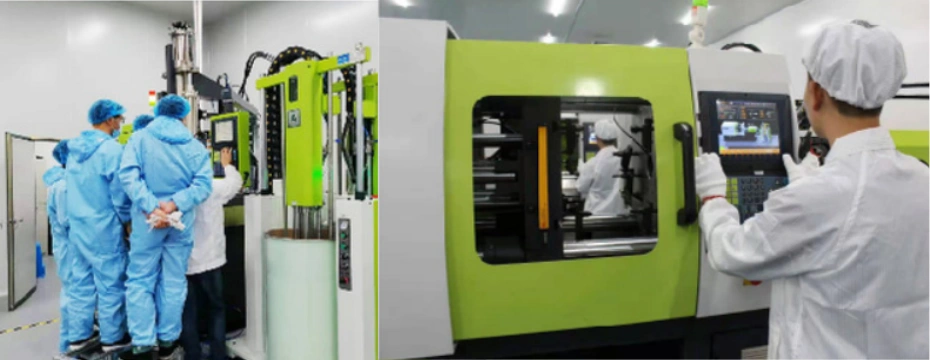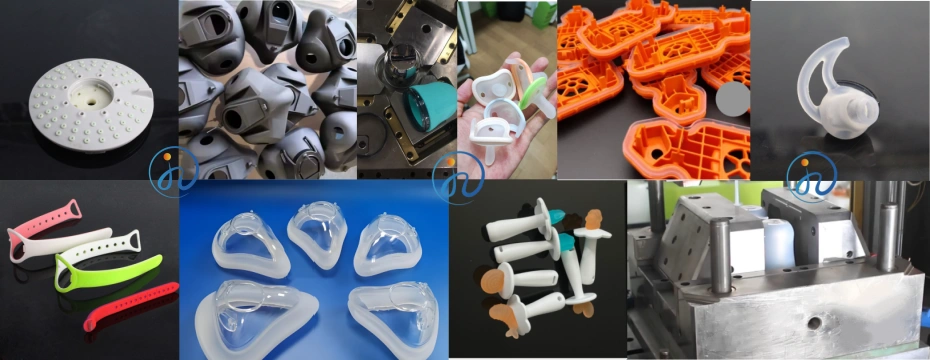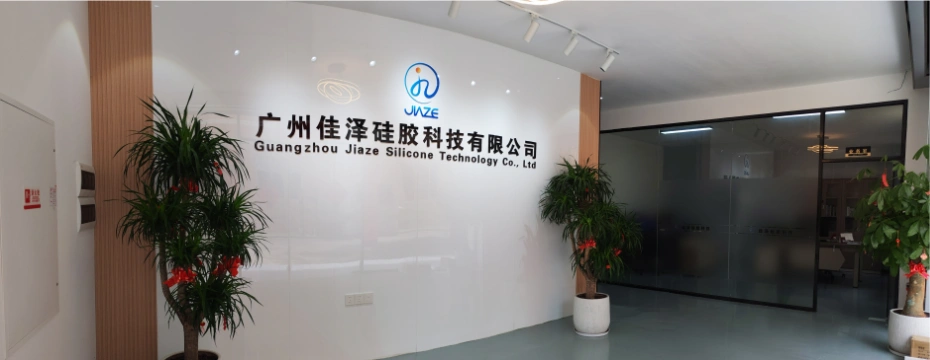Table of Contents
ToggleThe LSR overmolding process allows manufacturers to produce specialized components consisting of two different substrates. Unlike LSR 2-shot molding in which both materials are molded during the same molding process, in the LSR overmolding process, LSR is molded around a finished molded part, or a metal or other substrate.
In this article, we will explore what it is, how the process works, its advantages, common applications, and why it is becoming a preferred choice for modern product design and manufacturing.
What Is LSR Overmolding?
LSR overmolding refers to the process of injecting Liquid Silicone Rubber over a substrate or base material, typically a rigid plastic or metal component. The LSR material forms a soft, flexible, and durable layer that bonds chemically or mechanically to the substrate, creating a single, integrated part with enhanced properties.

This process is also known as two-shot molding or multi-material molding, as it involves combining two different materials into one seamless product.
How Does the LSR Overmolding Process Work?
The LSR overmolding process generally follows these key steps:
- Substrate Preparation
The base component, made of plastic, metal, or another material, is manufactured separately through processes such as injection molding, machining, or stamping. - Placement in the Mold
The substrate is carefully positioned in a specially designed mold cavity that matches the final product’s geometry. - Injection of Liquid Silicone Rubber (LSR)
Using an LSR injection molding machine, liquid silicone rubber is precisely injected into the mold, surrounding or covering specific areas of the substrate. - Curing and Bonding
The LSR is heat-cured inside the mold, forming a strong, permanent bond with the substrate. - Ejection and Quality Control
Once cured, the overmolded part is ejected from the mold and undergoes inspection to ensure dimensional accuracy and performance standards.
Advantages of LSR Overmolding
The process offers numerous benefits, making it a preferred solution across various industries:
1. Enhanced Product Durability
LSR provides excellent resistance to extreme temperatures, chemicals, UV radiation, and mechanical stress.
2. Superior Sealing and Protection
The silicone overmold creates watertight, dustproof, and shock-resistant seals, ideal for sensitive electronics or medical devices.

3. Design Flexibility
Complex geometries, ergonomic grips, and custom textures can be easily achieving with it.
4. Improved User Comfort
Soft-touch surfaces and skin-friendly materials make overmolded products comfortable for prolonged use, especially in wearable devices and medical applications.
5. Biocompatibility
Medical-grade LSR is safe for direct skin contact, making it ideal for healthcare, baby products, and personal care items.
6. Reduced Assembly Steps
By combining materials into a single component, manufacturers can reduce part counts and assembly time, improving efficiency.
Common Applications of LSR Overmolding
LSR overmolding is widely adopting in the following industries:
Medical Industry
- Respirator masks
- CPAP nasal pillows
- Catheter seals
- Medical device housings
Automotive Industry
- Seals and gaskets
- Electrical connectors
- Sensor housings
- Vibration-damping components
Consumer Electronics
- Smartphone protective cases
- Waterproof seals for wearables
- Buttons and keypads
Baby and Personal Care Products
- Baby bottle nipples
- Pacifiers
- Soft-touch grips for utensils
Industrial and Electrical Applications
- Cable assemblies
- Switch covers
- Enclosure seals

Why Choose LSR Overmolding?
Choosing LSR overmolding provides product developers and manufacturers with a reliable solution for creating durable, functional, and user-friendly products. The ability to bond silicone to metals or plastics enhances product performance while reducing manufacturing complexity.
Key reasons to choose LSR overmolding include:
Superior material bonding
Enhanced mechanical and environmental resistance
High production efficiency
Design freedom for innovative products
Compliance with medical and food-grade safety standards
Conclusion
LSR overmolding is a cutting-edge manufacturing technique that combines the benefits of Liquid Silicone Rubber with the strength of other materials. Its versatility, durability, and ability to create complex, integrated components make it indispensable in industries ranging from healthcare to automotive.

Working with an experienced manufacturer that has the experience and knowledge of the tooling and LSR overmolding process, and an understanding of the nuances and differences between LSRs and thermoplastics is mandatory. It can make the difference between success and failure.